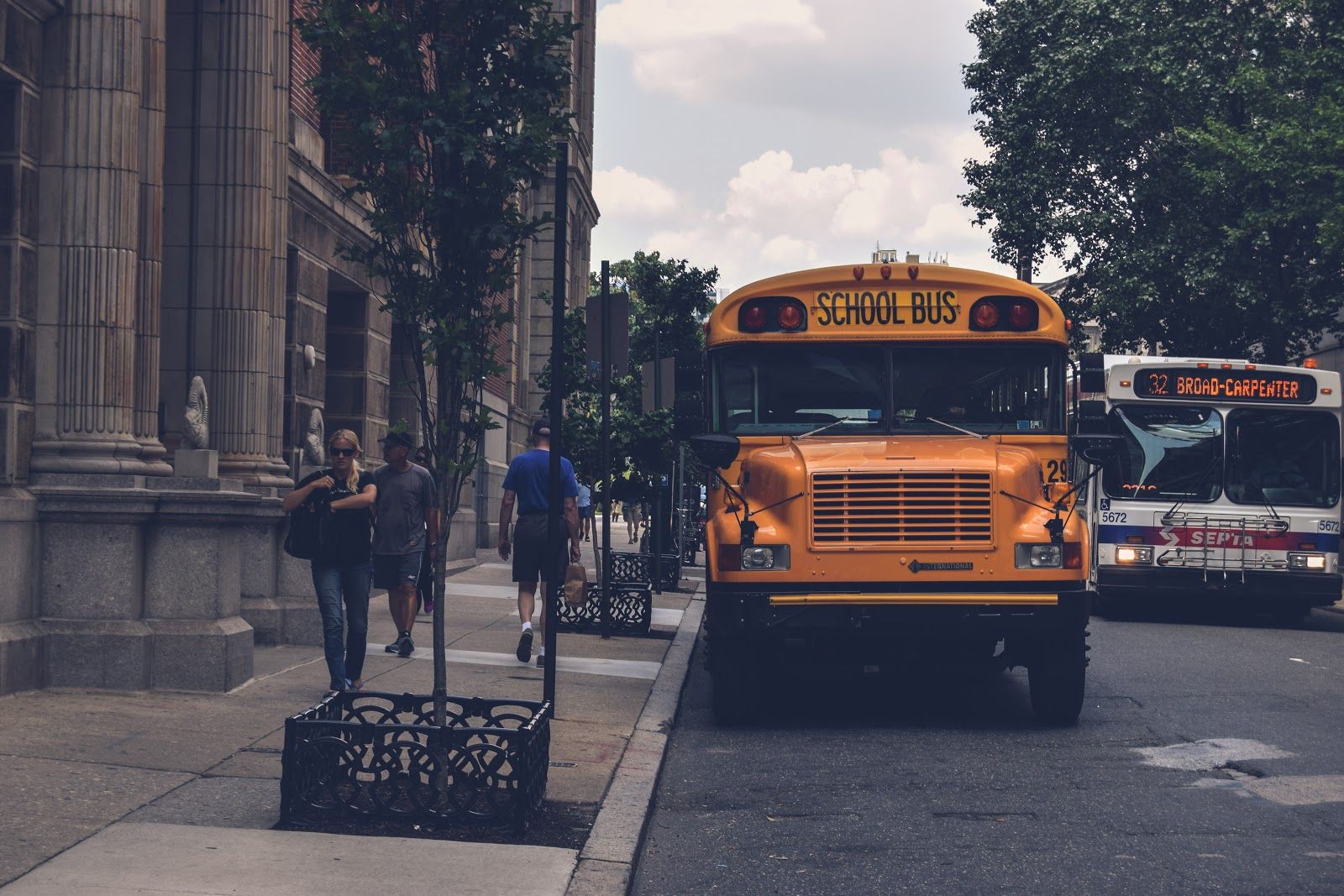As a parent, sending your child off to school on the bus can be a convenient and time-saving transportation option. Riding the school bus is also one of the safest modes of transportation for your child. According to the American School Bus Council (ASBC):
- About 480,000 school buses operate each day and transport almost 26 million children to school and incidents are rare.
- School bus drivers are required to complete specialized training on safely loading and unloading passengers, behavioral management, and emergency medical procedures.
- School buses include several safety design features, such as their bright yellow paint color, flashing red lights, reinforced sides, and cross-view mirrors.
- Each school district must meet vast and strict school bus industry standards, including driver qualifications, federal and state laws, and safety guidelines.
Although school buses are safe, watching your child board a big yellow bus may still be an emotional experience for both of you. To ensure your child has a safe school year as a bus rider, it’s important to review back to school safety tips together, including bus riding safety. When you and your child know how to stay safe at the bus stop and around the school bus, you can ensure the ride to and from school is a pleasant and fun experience.
At the School Bus Stop
To avoid a rushed morning and a stressed-out child, plan to get your child to the bus stop at least five minutes before the school bus is scheduled to arrive. If the bus driver is early, this helps ensure your child doesn’t miss the bus.
If your child plans to walk or ride their bike to the bus stop, do a trial run before the school year begins. Make sure your child knows the route and is familiar with best practices for crossing streets. Instilling traffic etiquette guidelines and leaving early for the bus stop keeps your child calm and aware of the cars around them. These precautions prevent car accidents involving your child, especially during morning rush hour.
No matter how you plan to have your child get to the bus stop, visit the stop before the school year starts to go over safety rules. Important school bus stop safety guidelines you should review with your child include the following:
- Standing at least six feet away from the curb when waiting on the bus.
- Not sitting on the curb.
- Refraining from running, jumping, or playing close to the street.
If you plan to drive your child to the bus stop and wait for them to board the bus, you’ll also need to follow some basic school bus stop safety rules. Park your vehicle in an area that doesn’t block traffic or prohibits the bus from pulling in.
Observe the children at the stop to ensure they stay safe and out of the street. By keeping an eye on younger children waiting for the bus, you can intervene if a child isn’t observing these important safety rules.
Around the School Bus
Your child’s behavior around the bus may also prevent accidents. While school bus drivers receive specialized training, they may not be aware of everything that’s happening around them at all times. It’s important that your child knows never to walk behind the school bus, since it could back up at any time.
Your child should never try to retrieve items or belongings they may have dropped under the school bus without asking the driver for help first. To prevent an accident, remind your child to always make eye contact with the school bus driver before attempting to cross the street in front of the stopped bus.
Getting On/Off the School Bus
While getting on and off the school bus only takes a moment, there are many things that can go awry. Teaching your child about the proper safety precautions is key to preventing an accident when boarding or getting off the bus.
Be sure your child knows to continue to wait safely away from the curb as the bus pulls up to the bus stop. Making it a habit for your child to stay away from the curb at the bus stop may help avoid unpredictable accidents, such as a drunk driver losing control of their vehicle or a car taking a turn too sharply and coming up onto the curb.
When the school bus arrives, remind your child to wait until it has come to a complete stop and the driver has opened the doors before moving toward the bus. This ensures the driver has stopped the bus and is ready for the children to board. It also keeps the children back from the doors so the driver can properly and fully open them without incident.
There are additional safety measures your child should take when the bus arrives to prevent injury or accidents. Ask your child to check their shoes and make sure shoelaces are tied and fastened securely before attempting to board the bus. Be sure your child knows how to tie shoelaces on their own if they’ll be riding the bus.
Encourage your child to use the bus handrails while boarding the bus. Stairs can be steep onto the school bus and the handrails provide a little extra stability, helping your child to safely board.
Behavior While Riding the School Bus
To prevent traffic accidents, it’s important for your child to understand the behavior expected of them while riding the bus. When children are well-behaved while riding the school bus, the driver can focus on the road and get all passengers to and from school safely.
Behaviors Suitable For Riding the Bus
Most school buses aren’t equipped with seatbelts but if yours is, encourage your child to buckle up when the bus is in motion. Remind your child to sit facing forward on the seat. This eliminates distractions for the driver but also minimizes the potential for injury if an accident were to occur.
Behaviors Not Suitable For Riding the Bus
Your child’s books, backpack, and other belongings should be on their lap or on the seat next to them and never in the aisle. If there’s an emergency, a clear aisle allows for quick access to the emergency exit and provides a path for the driver to use if they need to assist the children.
Remind your child that the bus driver has an extremely important job and it’s best not to distract them. Your child may speak quietly with friends, but yelling, horseplaying, or engaging with the bus driver should be discouraged.
Reviewing school bus precautions and other basic road safety guidelines with your child is crucial for a safe school year. By understanding school bus safety etiquette and procedures and ensuring your child is well versed on how to stay safe on the bus, the school year will be filled with safe and simple commutes.







